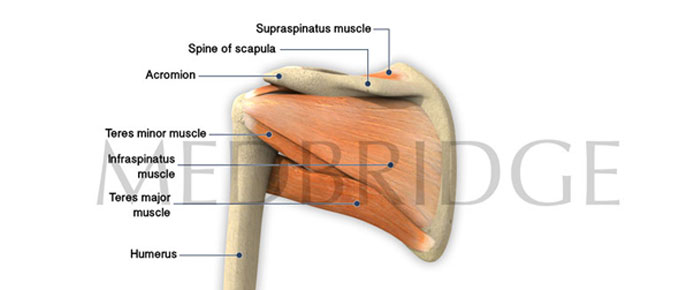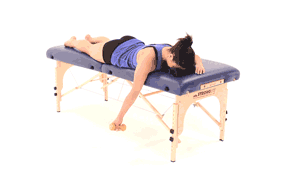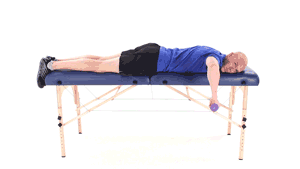Shoulder Biomechanics and Exercises

The shoulder consists of two force couples: one is at the glenohumeral (GH) joint and the other is at the scapulothoracic articulation.1,2
Shoulder force couples
A force couple is defined as two equal but oppositely directed forces acting simultaneously on opposite sides of an axis that generates rotation. In mechanics, a couple is a system of forces that results in a moment without a resultant force and creates a rotation without translation.3
Shoulder motion
Ludewig and Reynolds4 observed that the component movements of shoulder motion during humeral elevation from anterior to the frontal plane (plane of the scapula) included:
- clavicular elevation and posterior axial rotation
- scapular internal rotation, upward rotation, and posterior tilting relative to the clavicle
- GH elevation and external rotation
Overall, shoulder motion consists of substantial angular rotations of the humerus, scapula and clavicle enabling the multiple-joint interaction of the glenohumeral, acromioclavicular and scapulothoracic articulations required to elevate the arm overhead.1,2

Prone Shoulder Horizontal Abduction

Prone Shoulder External Rotation
Note: It is the responsibility of the treating practitioner, relying on independent expertise and knowledge of the patient, to determine the best treatment and method of application for the patient.
Scapular force couple
A scapular force couple is produced by the trapezius and serratus anterior during upward rotation of the scapula with arm elevation. Though the trapezius and serratus anterior are producing linear opposing forces, there is no linear translation of the scapula.1 Upward rotation of the scapula assists arm elevation.
Glenohumeral force couple
The GH force couple is a modified force couple because the two forces involved are not opposite to one another. The deltoid produces a superior force, while the subscapularis and infraspinatus/teres minor produce a compressive and inferior force.1
Although the forces at the GH joint are not equal but oppositely directed forces, the combined compressive forces of the subscapularis and infraspinatus/teres minor pull the head into the glenoid, counteracting the superior shear force of the deltoid muscle. Because of this compressive force and the geometry of the GH joint (ball and socket), the overall effect is rotation of the humerus with a very small superior and inferior linear translation of the humeral head.
Rotation of the humeral head must take place with any movement of the humerus. Though the movements of the humerus in elevation can be described as moving through the sagittal and frontal planes of motion, the humerus is actually moving through an arc of motion, with a fixed proximal segment (humeral head) that is rotating on a base (glenoid fossa).1
Therefore, evaluation and treatment should be consistent with the biomechanics of the shoulder movements of rotation.
- Neumann, D. A. (2009). Kinesiology of the musculoskeletal system (2nd ed.). St. Louis: Mosby
- Nordin, M., & Frankel, V. H. (2001). Basic biomechanics of the musculoskeletal system (3rd ed.). Philadelphia: Lippincott, Williams & Wilkins
- Norkin, C., & Levangie, P. K. (1992). Joint structure and function: a comprehensive analysis (2nd ed.). Philadelphia: F. A. Davis Publications
- Ludewig, P. M., & Reynolds, J. F. (2009). The association of scapular kinematics and glenohumeral joint pathologies. The Journal of Orthopaedic and Sports Physical Therapy, 39(2), 90-104.

